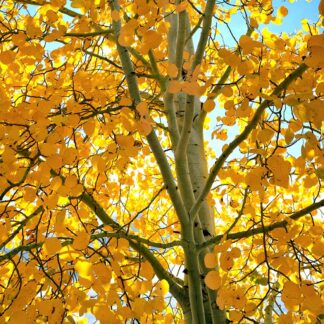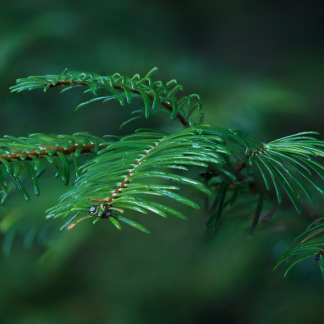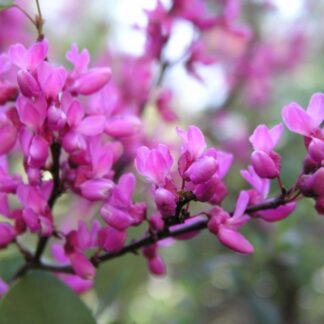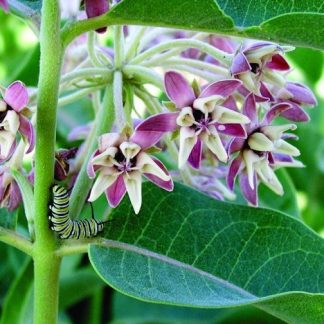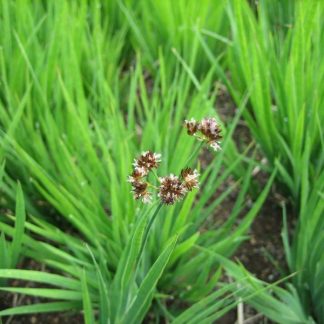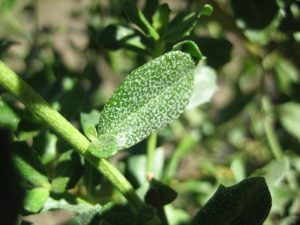 Coyote bush is a striking sight in the dull winter months on the Oregon coast. Growing in two different forms, the coastal version is low and prostrate, while the interior form is upright and shrubby. The leaves are covered with resin glands, which vary the coloring of the shrub from dark green to gray. The flowers are dioecious, meaning the female and male flowers are on separate plants. As part of the Asteraceae family the inflorescences are composed of many disc flowers. The Oregon Flora Project has close-up photos of the female and male flowers.
Coyote bush is a striking sight in the dull winter months on the Oregon coast. Growing in two different forms, the coastal version is low and prostrate, while the interior form is upright and shrubby. The leaves are covered with resin glands, which vary the coloring of the shrub from dark green to gray. The flowers are dioecious, meaning the female and male flowers are on separate plants. As part of the Asteraceae family the inflorescences are composed of many disc flowers. The Oregon Flora Project has close-up photos of the female and male flowers.
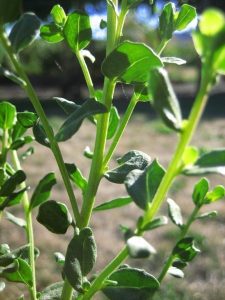 An underused specimen in cultivation, B. piluaris is a simple, although valuable addition, as it can tolerate drought once established and is more deer resistant than most plants. In the garden, coyote bush can be used as a hedge, or in areas that are prone to erosion. It should be pruned back periodically simulating fires/grazing that would occur naturally in the wild. It has an extensive root system with the tap root growing up to 10 ft long, as well as forming many outward-growing roots. When planting, plant further apart then normal as the underground growth is much greater than that above ground.
An underused specimen in cultivation, B. piluaris is a simple, although valuable addition, as it can tolerate drought once established and is more deer resistant than most plants. In the garden, coyote bush can be used as a hedge, or in areas that are prone to erosion. It should be pruned back periodically simulating fires/grazing that would occur naturally in the wild. It has an extensive root system with the tap root growing up to 10 ft long, as well as forming many outward-growing roots. When planting, plant further apart then normal as the underground growth is much greater than that above ground.
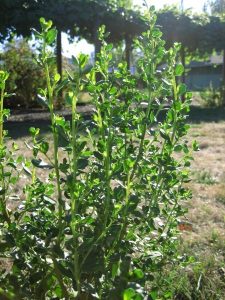 In an excerpt from the book, Gardening with a Wild Heart: Restoring California’s Native Landscapes at Home, Judith Larner Lowry eloquently describes the benefits Baccharis pilularis provides it’s environment. These include, but aren’t limited to: habitat for birds, and other small animals; cover for native perennials to establish themselves; nectar for many insects. She finishes her excerpt by stating, “It is to coyote bush that I turn to when discouraged or in need of a reminder of all that is available to learn in my own back yard”
In an excerpt from the book, Gardening with a Wild Heart: Restoring California’s Native Landscapes at Home, Judith Larner Lowry eloquently describes the benefits Baccharis pilularis provides it’s environment. These include, but aren’t limited to: habitat for birds, and other small animals; cover for native perennials to establish themselves; nectar for many insects. She finishes her excerpt by stating, “It is to coyote bush that I turn to when discouraged or in need of a reminder of all that is available to learn in my own back yard”
A truly easy to grow, and well loved shrub. We have a limited number of Baccharis pilularis available in containers

